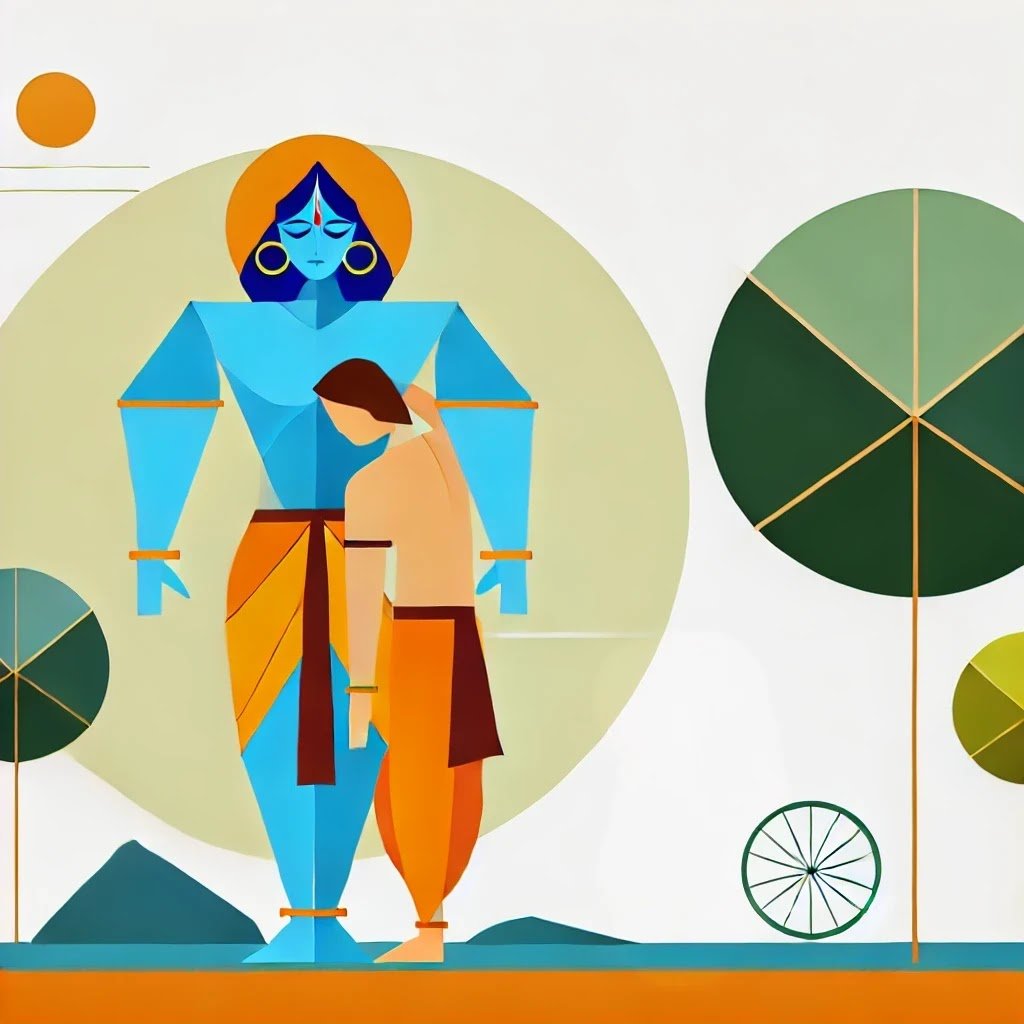| 4 Different Names of Bharata and Stories Associated With Them |
Born as a queen’s son, he faced the existence of an outcast. He exemplified integrity, generosity, and loyalty, yet destiny led him astray. This was Bharat, the devoted sibling of Rama, the monarch who declined the throne. His unwavering moral compass stands out, but Bharata’s tale is frequently eclipsed by the splendor of his brother’s exploits. Nevertheless, there exists one narrative that profoundly highlights his selflessness—a tale not often recounted but one that beautifully illustrates his profound sense of duty and honor.
In a lesser-known legend, while Rama was in exile, Bharata governed Ayodhya in Rama’s name, but rather than luxuriating in the palace, he opted to reside in Nandigrama, a modest village just outside the city. There, he lived humbly, donned simple attire, and consumed frugal meals. His reign wasn’t about indulging in royal pleasures but was a form of penance for the suffering his mother inflicted on Rama. Bharata even shunned the throne, placing Rama’s sandals upon it as a token of the rightful king. Each day, he would rise to undertake the responsibilities of a ruler, yet in his heart, he lived as a hermit, yearning for the return of his brother.
This often-overlooked narrative uncovers Bharata’s great humility—a man who had every claim to the throne but chose instead to work behind his brother, motivated by love and loyalty. This tale frames the various names Bharata holds, each reflecting different aspects of his allegiance, righteousness, and sacrifice.
Kaikeyiputra
As the child of Queen Kaikeyi, Bharata was referred to as Kaikeyiputra, meaning son of Kaikeyi. This title irrevocably connected him to the queen whose ambitions changed the fate of the realm. When Kaikeyi insisted on Rama’s banishment to usurp the throne for her offspring, Bharata’s world crumbled. Rather than claiming the crown for himself, Bharata stood firmly against his mother’s will, rejecting the throne she sought to obtain. His tale is not of ambition but rather of love and respect for his sibling.
Ramanuja
Identified as Ramanuja, which means “younger brother of Rama,” Bharata’s existence was shaped by his connection with his elder sibling. When Rama was exiled, Bharata made every effort to locate him, begging for his return. Rama, adhering to his dharma, refused, yet Bharata’s loyalty remained unshakeable. In a remarkable act of devotion, Bharata placed Rama’s sandals on the Ayodhya throne and ruled as a caretaker, a symbol of his unwavering fidelity and acknowledgment of Rama as the rightful ruler.
Dharma-Atma
Bharata received the honorific Dharma-Atma, translating to “righteous soul,” reflecting his life guided by an intense sense of duty. He could have easily seized the throne, but his conscience would not permit him to betray Rama. The internal struggle Bharata faced became a testament to his moral character. He chose the path of virtue, living like a sage in tree bark, residing outside the palace, while governing Ayodhya in Rama’s name, all the while awaiting his brother’s return.
Satrapati
In his role as the temporary leader of Ayodhya, Bharata was designated as Satrapati. However, he never fully embraced the throne for himself. Instead, Bharata presided as a steward, managing the kingdom in Rama’s absence. His brother’s sandals rested on the regal seat, a continuous reminder that his power was not truly his but belonged to his sibling. Bharata’s governance focused on service rather than authority, showcasing that authentic leadership arises from humility and dedication.
Through each name, Bharata’s essence is revealed: the devoted son, the faithful brother, the virtuous ruler, and the humble servant of righteousness.
Additionally, explore: Shanta – Sister of Rama

